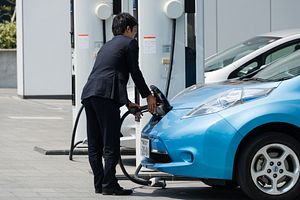With all Japan’s 48 nuclear reactor offline, and the chance that even half will ever come back online doubtful, the country is now almost wholly dependent on fossil fuel imports. This situation would be highly unsustainable for any country, which must rely for its energy security on other countries and whose imports must often pass through contested waters. Japan has several options under consideration to mitigate this problem. Aside from its large investments in solar and wind energy, Japan is considering three other medium to long-term options for its energy independence.
The first and potentially most immediate source of energy is not far from its already existing nuclear technology. The Yomiuri Shimbun reported yesterday that the government intends to restart full-scale research and development into high-temperature gas-cooled nuclear reactors. Research into next-generation reactors was stopped in the wake of the 2011 Fukushima Daiichi nuclear disaster, but the government plans to restart a test reactor in Oarai, Ibaraki prefecture sometime in fiscal 2015. The new technology uses helium gas to cool the power plant, avoiding the large buildups of hydrogen that led to the explosions and the ultimate disaster at Fukushima. The test reactor created a sustained fission chain reaction in 1998, so the technology is already well into its development phase.
A second idea has been floated by a Norwegian offshore oil platform manufacturer called Sevan Marine ASA. It has proposed selling Japan a $1.5 billion 700 megawatt offshore natural gas power plant, which could be moored as far as 50 km (30 miles) out to sea. While the current plan now envisions producing energy with natural gas, wind and ultimately even nuclear power could be generated on these platforms. Their distance from shore is being highlighted as a mitigating factor with tsunamis. However, technological barriers still remain to putting nuclear power offshore, and the issues of how to handle potential disasters at sea as well as the rough seas encountered that far from shore would also need to be addressed.
A third plan to develop hydrogen power is perhaps more long-term, yet the government has set out plans and goals to start using it over the next 30 years. Toyota Motor Corp. will begin selling fuel cell vehicles (FCVs) next January that use hydrogen as a fuel source. The cars will cost 7 million yen ($65,800), but the government is pushing to make them viable by offering a $20,000 subsidy as well as $2.6 million for each fueling station, with hopes to have 100 stations by March 2016 and 1,000 by 2025. Beyond the auto industry, Japan plans to implement a “hydrogen society” by 2030, using the source to supply 10 percent or 5.3 million homes. While it will initially require fossil fuels to produce the necessary hydrogen, by 2040 Japan plans to use heat generated from solar, wind and hydroelectric sources to generate “carbon-free hydrogen.”
Each of these potential energy sources is ambitious, and not without obstacles to implementation. While the technological hurdles are evident, R&D is already well underway. A larger problem may be popular aversion to these new approaches. The first two still envision using some form of nuclear energy, and while the technology to make this source significantly safer may indeed be developed, convincing the public of its efficacy will be another matter. Even mitigating the effects of earthquakes and tsunamis by moving offshore is not foolproof. Aside from the problems listed earlier, competing with the entrenched rights of Japanese fishermen will be difficult. Hydrogen power could also prove problematic to scale up, as some people fear the risk of explosion that can happen when hydrogen comes in contact with oxygen. Local politicians in Saitama prefecture are already passing ordinances to move fueling stations further from residential areas and to build barriers. The prospect of hydrogen fuel becoming profitable for utility companies in the next ten years is remote, according to the president of JX Nippon Oil & Energy Corp. Adding costs to alleviate popular anxieties based on the tragedy at Fukushima could further postpone Japan’s goal of a more balanced energy supply.

































